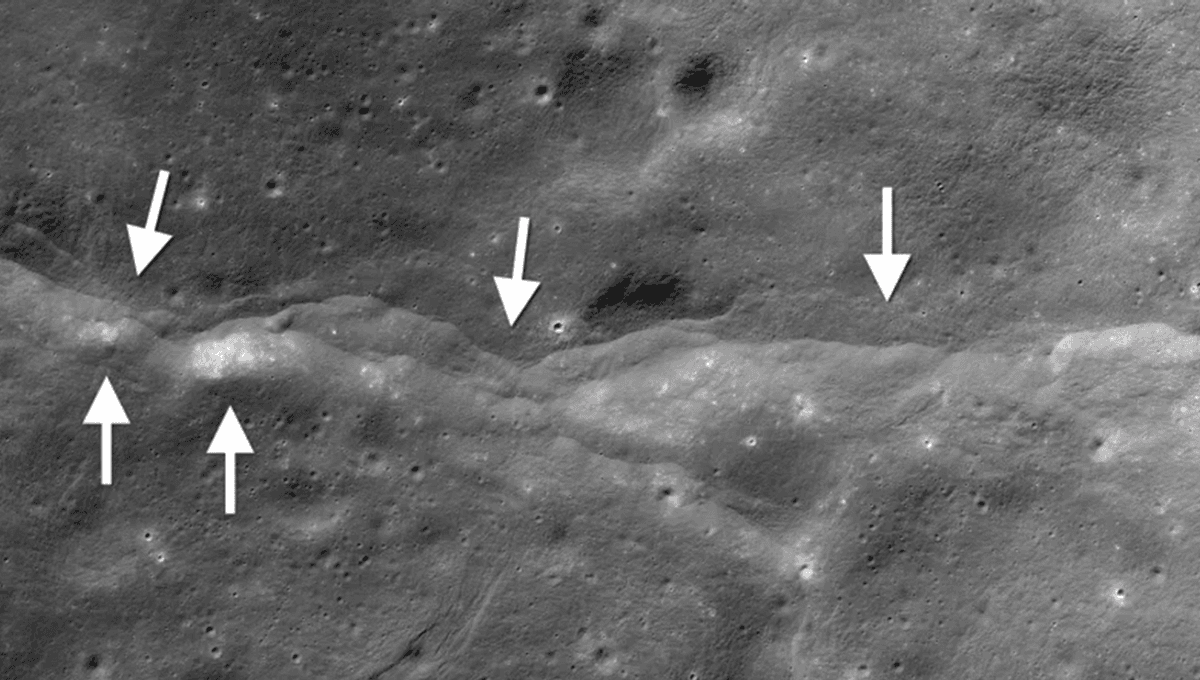
The Moon is appearing smaller and smaller in our skies. Over time, the number of total eclipses will decrease until one day, around 600 million years from now, humans (or whichever breed of dog takes over once we’re gone) will look up and see the final total eclipse as the Moon no longer covers the Sun from our perspective.
This is actually because the Moon is moving away from us. But as well as shrinking in our skies, our favorite satellite (sorry, quasi-moon) is also shrinking in on itself, and causing moonquakes as it does so.
When earthquakes occur on Earth, waves of energy are sent out in all directions. By measuring the tremors using seismometers from several locations at the surface, scientists can create a map of the Earth’s interior. Since rocks and liquids within the Earth are of different densities, the waves move through them at different speeds, allowing geologists to figure out what type of material the waves are going through. This is known as seismic tomography.
The US Apollo program placed a number of seismometers on the Moon to learn about its structure in the same way. By analyzing the data, scientists have learned about the inner structure, including that the Moon has an inner core about 500 kilometers (310 miles) across, much less dense than the Earth’s.
In 2019, a team reanalyzed the data using an algorithm designed to locate quakes detected by seismic networks more accurately. They were able to better locate the epicenters of 28 shallow quakes that occurred between 1969 to 1977, and found that eight of them were within 30 kilometers (18.6 miles)
“We think it’s very likely that these eight quakes were produced by faults slipping as stress built up when the lunar crust was compressed by global contraction and tidal forces, indicating that the Apollo seismometers recorded the shrinking Moon and the Moon is still tectonically active,” Thomas Watters, senior scientist in the Center for Earth and Planetary Studies at the Smithsonian’s National Air and Space Museum in Washington, said in a NASA statement.
“Our analysis gives the first evidence that these faults are still active and likely producing moonquakes today as the Moon continues to gradually cool and shrink,” he added.
Imaging of slopes created by slipped faults, known as scarps, adds to evidence that this activity wasn’t all that long ago. Some appear to have happened relatively recently, which we can tell by seeing bright patches of unearthed (unmooned?) lunar rock and soil, which hasn’t been dulled by weathering. Boulder tracks have also been imaged, where loose rock has scraped down a newly created slope. If this hadn’t happened recently, the track would have been erased in a relatively quick (for geologists) timescale.
The team hopes that placing further seismometers on the Moon will be a priority for future missions. It was when India sent a lander to the Moon this year – they detected movement.
The study is published in Nature Geoscience.
Source Link: The Moon Has Been Caught Shrinking By 50-Year-Old Lunar Seismometers